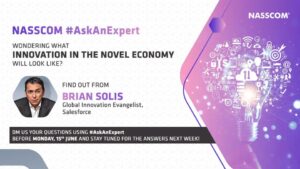
Email, we love to hate it, yet we hate to love it. For better or for worse, we are tethered to our inbox and continue to send messages and respond to those individuals and organizations to which we’re tied or vested. Over the years, I’ve labeled email as the world’s largest untapped social network and even though many services attempted to socialize the inbox over the years, email, for the large part, remains regressive.
For the time being, brands and organizations continue to rely on email to connect and stay connected with various stakeholder communities. While message open rates and conversion ratios remain abysmal, email is nonetheless, effective en masse. However, the time individuals spend in their email labyrinth is eroding. There are services like service like Aweber, Mailerlite or MailChimp. Analytics firm Nielsen recently reported that nearly 25% of the time Americans spend online is now spent on social networks. Additionally, email only accounted for 8.3% in June, down from 11.5% last year.
Social networks represent something promising to any organization dependent on communications. Each network represents an “always on” series of engagement opportunities that are each inherently opt in whether they’re in the front or back channel.
– Wall posts
– Direct messages
– Invitations
– Gifts
– Public @ messages
Businesses are now attempting to migrate or extend their communities to social networks including Facebook and Twitter. The ability to do so offers organizations the ability to not only build communities in more modern, real-time and interactive domains, social networks offer a new way to connect personally and contextually. Engaging in social networks presents two immediate benefits:
1. Connect value 1 to 1 to many individuals
2. Connect information 1 to many
Either way, meaningful and substantial information in these paradigms triggers the social effect, which expands reach and also the community overall through comments, shares, likes, retweets, and connections. This activity is visible by friends and friends of friends, and so on, and when combined with an appealing click to action, also enhanced performance and metrics in the process.
eROI recently released a new report, “The Current State of Social, Mobile, and Email Integration,” which found that 66% of marketers included links to social profiles in email campaigns. StrongMail released research in its study, “2010 Email Marketing Survey” that not only corroborated the data from eROI, it upped it to 71%.
StrongMail interviewed business executives in its most current study released in July 2010. Second to the promotion of social presences in email campaigns, was the ability to provide social sharing functionality inside email. We’re already witnessing the migration as well as integrating the social effect into the inbox. eROI also found that this clickable functionality was secondary in terms of importance with 59.1% of all responses.

Of those social networks most actively promoted in email, eROI found that Facebook was the top promoted network with 91%. Twitter ranked second with just under 84%. LinkedIn and YouTube earned third and fourth spots with 48% and 34% respectively. Other studies found that most small to mid-sized businesses rarely promoted on other social networks outside of Facebook and Twitter.
Social Databases
As engagement evolves from email 1.0 to social networks, expect to see experimentation with one-to-many communication through automated one-to-one and one-to-many mass messaging systems. This capability will evolve from messaging existing friends and followers to sophisticated frameworks that find and connect with individuals who have publicly shared information related to industries, products, services, and interests via keywords. These systems will seek an opt-in relationship through a reciprocal friend, follow or “like” in order to experiment with direct messages that offer promotions, rewards, or exclusive access or content for establishing and maintaining the link. Initial experiments will resemble dedicated push streams such as @DellOutlet or Twitter’s @EarlyBird promotion channels where followers subscribe to accounts for clearly articulated benefits. Over time, marketers will seek to enhance responses and ensuing actions through varieties of messages aimed at segmented users as indexed by expressed wants or defined preferences. Eventually, we will see personalized, contextualized and value-added engagement to induce positive word of mouth and consumer responses.
In the end, it’s what you introduce into your messages and streams that counts for everything. Regardless of the incumbent social messaging solutions that are available today or those soon to debut, what’s clear is that intention speaks volumes here. Any mass-marketing that mirrors email blasts of today will only create animosity and immediately alienate communities. In social media, you earn the relationships and inspire the desired outcomes that you deserve.
Remember…Relevance + Resonance = Significance (RRS)
Connect with Brian Solis on Twitter, LinkedIn, Tumblr, Facebook
___
Please consider reading, Engage!: It will help you find answers to your questions…

___
Get Putting the Public Back in Public Relations and The Conversation Prism:


___
Image Credit: ShutterStock






Very outstanding website.I am definitely bookmarking this page and
sharing it with my friends.Keep working, great job, I love it! <a
href=”http://www.eagledigitizing.com/en/vector_info.asp”>convert
image,Thanks!Keep making them!Looking forward to future
posts.This is such a great resource that you are providing and you give
it away for free.<a
href=”http://www.eagledigitizing.com/en/vector_info.asp”>vectorize
, I enjoy seeing websites that understand the value of providing a prime
resource for free. <a
href=”http://www.eagledigitizing.com/en/vector_info.asp”>bitmap to
vector,
I truly loved reading your post. Thanks!
Spot on, Brian! Email, as much as we love to hate it, can still work to bridge people from one platform to another. It's what happens on the other side that matters. There is so much opportunity for creativity in this space. 'What can we do to provide a unique value?' Ask that question and follow through with something fun and engaging – it really is that simple.
All that said, Twitter and Facebook are the darlings today, but there is absolutely no guarantee where things will land in a year, 2 years or 5 years down the line. Maintaining a relevant email list is still an 'owned' resource that can provide long-term value, whereas Likes and Followers can come and go with no guarantees. When 'the next thing' comes along, you can always add another icon to the bottom of your email campaigns and point them there. 🙂
Agree it's all about engaging your customers.
Brian-
Great overview. You know what the single, most egregious hole left to fill in email / SM integration is? Dynamically-updated signatures (or appended footer content).
Just think what an organization could do for its blog or social profiles if the thousands of emails it's already sending out per day automatically included the latest X number of blog posts.
I've spent literally days trying to figure out seamless, painless methods of doing this, but due largely to limitations in Outlook, the only solutions I've discovered are only half effective and prohibitively costly. I predict that if we could simply implement this one feature in our outgoing messages, traffic to the blog would increase tenfold, minimum. Yet, no vendors seem to have figured it out.
Ian,
If I understand you correctly, wisestamp.com does something similar to what you are referring to BUT from what I can tell, it only works for webmail, not if you access mail via Outlook. Have you considered migrating to a webmail UI like gmail or google apps mail?
Switching mail services is a non-starter at my 450+ employee company. The training, new vendor selection involved (re-integrating Eloqua, for example) would be well beyond the cost of anything I've looked at that *might* actually work. Most of those solutions are oriented toward appending disclaimers, and only do what I'm discussing as an added, optional feature.
Wisestamp works on thunderbird too
@Duncan – Indeed you are correct. Thanks for mentioning that!
There has always been the danger that social networks will detract from Email marketing, however I still see email as a massivle valuable channel. Problem with social networks are that they are very much real time, I know we are gearing towards a real time web but this gives the opportunity for people to miss out on messages important to them but perhaps not right at that moment. I know I miss lots in my twitter stream. Also I still see a danger with facebook that with too many likes my entire wall would be full of marketing messages from brands granted there is a choice to hide these but then thats it the brand is out of there. With email at least there is more control from the user, I caan come back to the email, file it in a relevant place, choose when I read it open it and respond.
Email is still a good tool for connecting with clients. It's personal and private. However I do love social media 😉
Did my comment come through? I was the first to post!
Erin, let me check. I don't see it…
Thanks for checking, but I posted it twice. Any reason my short comment would come through but not a longer one? I was really hoping I could get your feedback on some thoughts. 🙂
I checked the log and couldn't find it…you still have it handy?
A few years back, email was the new marketing frontier and companies were going crazy sending out all kind of spam, which inspired a backlash that made email marketing much less effective (CAN SPAM, filtering software, phishers and security concerns, etc.). Now, email is used more as it was intended, for one to one communication when you don't want to use the phone or you need to send someone a document or detailed information.
At this relatively early stage in the social media universe, we haven't gone into that information overload phase. The other factor is the privacy setting on social networks that has to some extent insulated people from the marketing message avalanche. Because of these two factors, people feel much more comfortable sending people to connect with them on Facebook, LinkedIn, or whatnot, thus the rise in using email as a tool to drive email recipients to social networks.
The way things are going with that development, I think in years we might even see email totally become obsolete. People will connect and communicate with each other using facebook and twitter as it is more convenient. You can see pictures and profiles with the person you are talking to and that provide the biggest advantage.
e-mail na twitter
Tudo bem?
Desenvolvo e-mails marketing para uma empresa e gostaria de adicionar 3 botões no topo do e-mail como forma de compartilhamento (Twitter, Facebook e Compartilhar e-mail com amigos).
Procurei algum aplicativo que possa aplicar RT ou CURTIR automaticamente com o subject do e-mail enviado, mas não achei. Encontrei apenas links que toda vez que fosse desenvolver um e-mail, teria que fazer manualmente o assunto, a frase (ou subject) e inserir o link encurtado.
Recebo diariamente e-mails de inúmeras lojas online e site de marcas. A grande maioria usa esses dispositivos que redirecionam automaticamente (ou eles tem o tempo de fazer manualmente cada link desses? [acredito que não, rs])
Aguardo contato. Caso não tenha ficado claro, segue o meu e-mail para qualquer esclarecimento de dúvida.
Email marketing is still advisable even though that there are lots of social media site.
MailChimp Review
I found this article interesting, I guess we are becoming too reliant on social networking now!
It’s good from the recommendation point of view, but it can also lead us down the wrong path too.
They both will get noticed it is how you use them and if you are offering value to your potential customers.